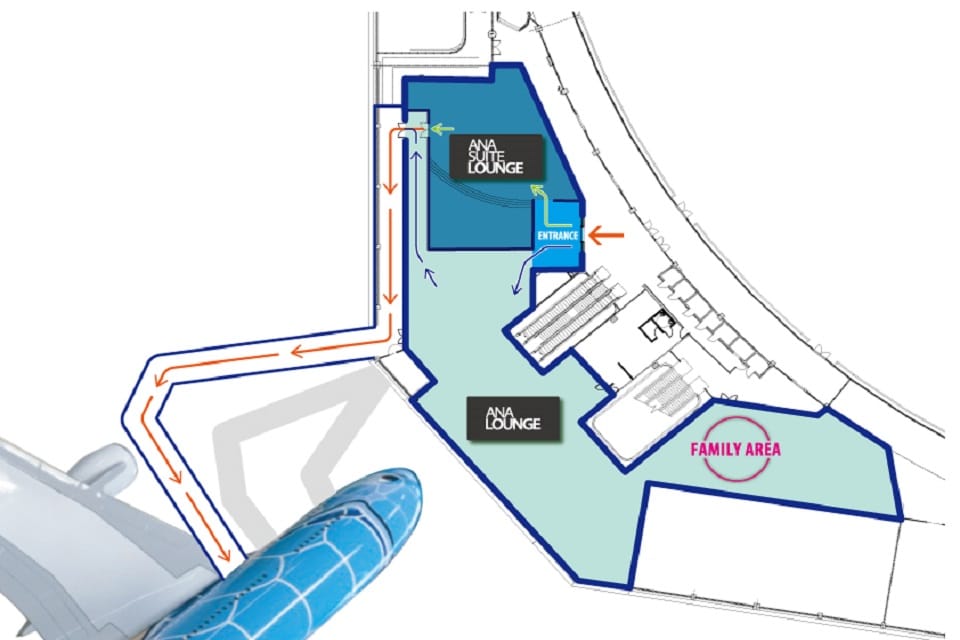Aviation
ANA Unveils the Features of its Honolulu Lounge for A380

TOKYO, May 30, 2018 – All Nippon Airways (ANA), Japan’s largest and only 5-Star airline, is creating a new lounge in the Daniel K. Inouye International Airport in Honolulu in line with the newly introduced “ANA HAWAii” concept and in preparation for the launch of the Airbus A380 (FLYING HONU) on the Tokyo – Honolulu route (*1). The lounge will be opening in spring 2019, making it the largest lounge in the airport, incorporating the ANA SUITE LOUNGE and ANA LOUNGE.


As ANA is preparing to launch the Airbus A380, it also plans to introduce a lounge where passengers can enjoy and relax every moment of their trip. The lounge will accommodate many unique features such as direct boarding access for passengers who have seats in the upper premium deck and a family area with a charming design for passengers with children. Furthermore, the design of the lounge will reflect a fusion of Japanese and Hawaiian essences, so visiting passengers are able to immerse themselves in Hawaii’s relaxing reverberation before making their trip back home, while those who call Hawaii home will be able to relax in a familiar atmosphere that incorporates the warmth of Japanese hospitality, in preparation for their trip to Japan.

The lounge will be located on the third floor of Terminal 2, above gate C4 (*3). When ANA passengers who are visiting the lounge board from gate C4, which is located on the second floor, they will be able to access the aircraft directly. Passengers boarding the upper deck of the aircraft will not have to bother leaving the lounge. Instead, they can relax and enjoy every moment in the lounge

ANA has also uniquely designed the lounge to respond to its passenger’s needs. As Hawaii is loved by many Japanese families and is a popular destination for their family vacations, ANA LOUNGE will feature a family area (Image 1) where parents can relax with their children. The family area will give the image of a tide pool and will have toys for the children to enjoy.


Furthermore, when guests enter the lounge (Image 2), they will be surrounded by visual elements including the Japanese traditional coffered ceiling as a motif, created with Hawaiian wood. ANA SUITE LOUNGE (Image 3) will have an exclusive and calm atmosphere where passengers can relax and ANA LOUNGE (Image 4) will dynamically depict a design of the sea, sky, and trees symbolizing Hawaiian nature on the floor, walls, and ceilings.
ANA will continue to offer opportunities for our customers to discover new aspects of Hawaii and delight them with new exciting experiences on FLYING HONU.
ANA SUITE LOUNGE
・First Class passengers (with one additional guest)
・Diamond Service members (with one additional guest)
ANA LOUNGE
・First Class passengers (with one additional guest)
・Business Class passengers
・Premium Economy passengers
・Diamond Service members (with one additional guest)
・Platinum Service members (with one additional guest)
・Super Flyers members (with one additional guest)
・Star Alliance Gold members (with one additional guest)
Read another article
https://jetlinemarvel.net/2018/04/25/ana-unveils-the-features-of-airbus-a380/

Airlines
Air India to Launch aircraft maintenance training institute in Bengaluru

Air India, one of India’s leading global airlines, is set to establish a Basic Maintenance Training Organization (BMTO) in Bengaluru.
This institute will offer a comprehensive Aircraft Maintenance Engineering (AME) program certified by the Directorate General of Civil Aviation (DGCA). The program will follow an integrated 2+2 year structure, combining classroom learning with practical, hands-on training.
This initiative is part of Air India’s broader goal of creating a robust aviation ecosystem in India. With plans to expand its fleet and strengthen its operations, the airline aims to build a skilled workforce of maintenance engineers, making the organization self-reliant while supporting its ambitious transformation journey.
This country tops visa rejections in the popular Schengen countries
To bring this vision to life, air india has partnered with Bengaluru Airport City Limited (BACL), a subsidiary of Bangalore International Airport Limited (BIAL). Together, they will develop a state-of-the-art facility spanning 86,000 square feet at Bengaluru Airport City.
This purpose-built campus will feature modern classrooms, well-equipped laboratories, and qualified trainers to deliver world-class education and training. The institute is expected to become operational by mid-2026.
The BMTO will be located close to Air India’s new 12-bay Maintenance, Repair, and Overhaul (MRO) facility, also set to open in Bengaluru by early 2026. The AME program will begin with two years of academic coursework, followed by two years of practical training at the MRO, ensuring students receive hands-on experience adhering to industry standards.
Sanctions & Engine Issues Ground Half of Russia’s A320neo fleet
In the meantime, Air India has introduced a Cadet AME program in collaboration with reputable institutions in Bengaluru and Hyderabad.
This ensures continuity in its commitment to developing skilled aircraft maintenance engineers while the BMTO facility is under construction. The program also allows students to pursue a bachelor’s degree through university partnerships, enhancing their career and academic opportunities.
With this initiative, air india plane aims to address the growing demand for skilled professionals in aircraft maintenance and engineering, air india new planes contributing to the development of India’s aviation sector and creating specialized career paths for aspiring engineers.
-

 Aviation2 months ago
Aviation2 months agoMicrosoft Flight Simulator Raises $3 Million to Bring Back the An-225 Mriya
-

 Airlines2 months ago
Airlines2 months agoQatar Citizens Can Travel to the United States Without a Visa
-

 Aviation2 months ago
Aviation2 months agoQatar Airways bans these new Electronic Devices on plane
-

 Airlines2 months ago
Airlines2 months agoJapan Airlines Rolls Out Free Domestic Flights to International Passengers
-

 Defence2 months ago
Defence2 months agoWhich Country Has the Largest Fleet of Fighter Aircraft?
-

 Airport2 months ago
Airport2 months agoWestern Sydney Airport Welcomes Its First Plane After 6 Years of construction
-

 Travel2 months ago
Travel2 months agoQatar Airways Launches Four Additional Flights from Amsterdam
-

 Aviation2 months ago
Aviation2 months agoDid you know ? Once Boeing 747 carried 1088 passenger in 1991








